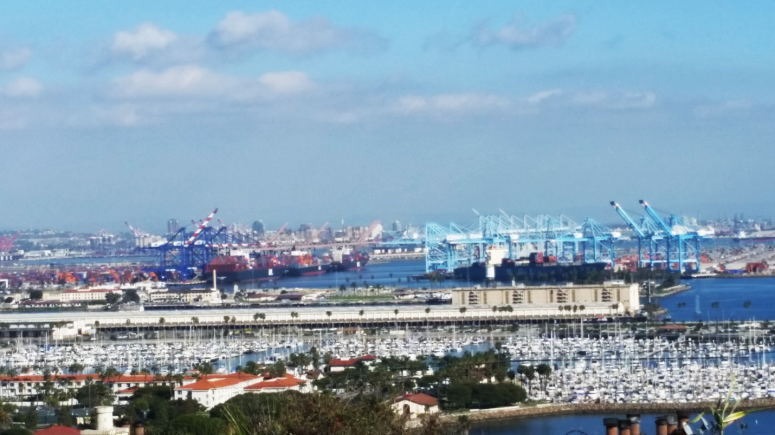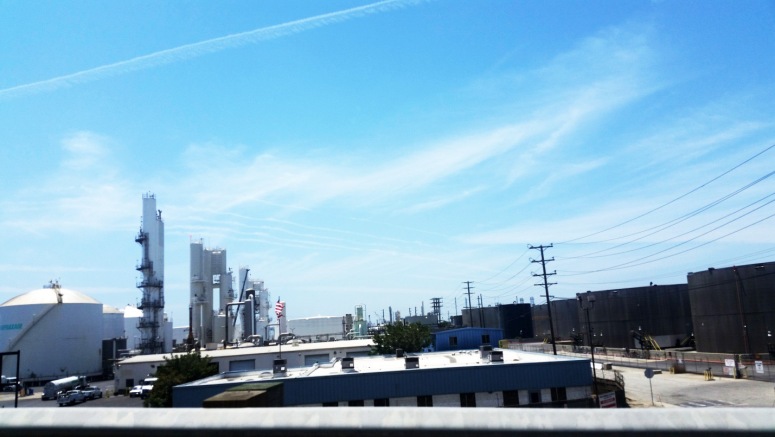
Port of Los Angeles, Los Angeles, California
When visiting Los Angeles, one of the first things that often comes to mind is taking a tour of Hollywood or Beverly Hills. But how about opting for a Toxic Tour instead? The Communities for a Better Environment (CBE), an environmental justice organization that empowers people directly affected by pollution to solve their own problems, has been giving Toxic Tours since 1995. The purpose of these tours is to increase the public awareness of the minority communities and low-income communities that are most directly impacted by various sources of toxins and pollution.
Communities for a Better Environment offers a tour to the general public every quarter, which can either be narrated in English or Spanish by community organizer Roberto Cabrales. The toxic tour may focus in any of the following industrial neighborhoods, which include Bell, Huntington Park, Long Beach, San Pedro, Vernon, or Wilmington. In the tour one will see any of the following sites:
- oil refineries
- toxic manufacturing
- recycling plants next to schools and residential communities
- 710 freeway
- Port of Los Angeles
- Port of Long Beach
Such sites represent an environmental hazard and generate serious health problems to the residents of the communities, which are predominantly working class Latinos.

Refinery in Wilmington, Los Angeles, California
Recent research conducted in the Los Angeles area primarily by scientists of the University of California-Los Angeles (UCLA) and the University of Southern California (USC), has found that there is a correlation between people living in proximity to freeways and a range of health problems that include asthma, reduced lung functioning, cardiovascular disease, and autism. In fact, the area that extends from Long Beach to East Los Angeles, is often referred to as the “diesel death zone,” since emissions from trucks, ships, trains, and other diesel-powered sources are common here. Despite the decline in emissions around the Port of Los Angeles and the Port of Long Beach due to the implementation of new technologies—such as clean-truck program—the severe levels of pollution remain. Furthermore, hot spots for cancer-causing traffic pollutants have been found throughout the area, especially along the 710 freeway—which extends from Long Beach to Alhambra.
Given this reality, it is necessary to bring awareness to the public about the environmental and health hazards that residents of some of our communities must endure. Moreover, it is important to empower these populations by providing them with organizing skills, leadership training, as well as legal, scientific and technical assistance. However, it is also the obligation of policy makers and government officials to address these issues through legislation and initiatives.
Do you live in a community that is exposed to environmental hazards? What steps are being taken by policy makers and government officials in your community to address the issue(s)?
Credits: Images by Marisol Maciel-Cervantes. Data linked to sources.
*This blog was originally posted in August 2015. H/T The Global Grid


